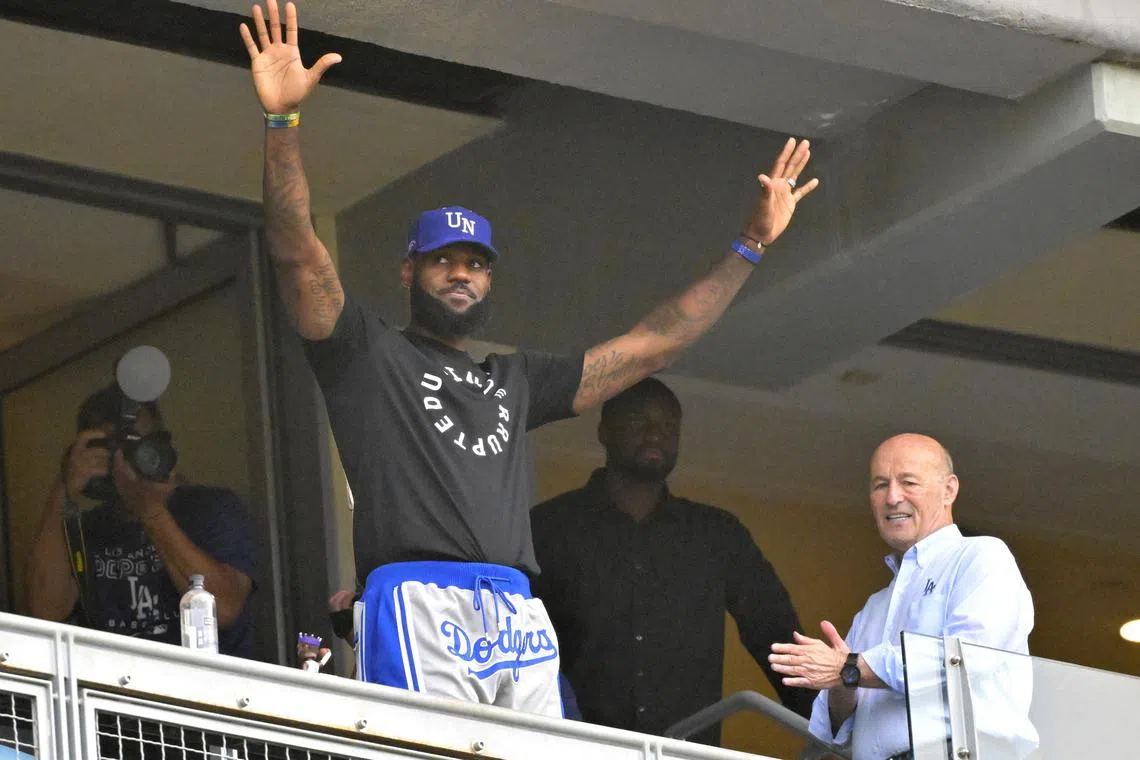NBA toughens rules on resting star players
Sign up now: Get ST's newsletters delivered to your inbox

Los Angeles Lakers' LeBron James has in the past been rested for games because of "load management".
PHOTO: REUTERS
Follow topic:
NEW YORK – The National Basketball Association (NBA) board of governors has unanimously approved new regulations under the player participation policy (PPP) that prevents teams from resting more than one “star” player in a game and setting punishment for violating the measure.
A star is defined as someone who has made an All-Star team or All-NBA team in the past three seasons.
The Los Angeles Lakers’ LeBron James and the Los Angeles Clippers’ Kawhi Leonard are among those who have been strategically rested by their clubs.
Under the new policy, for example, the Clippers would not be able to rest Leonard and Paul George in the same game.
The PPP will be implemented for the 2023-24 season, which starts on Oct 24, and NBA commissioner Adam Silver said executive vice-president of basketball operations Joe Dumars led the “reset on the issue” which had been under discussion for the past year.
“It’s a shared view by everyone in the league – it’s not just coming from the league office,” Silver added.
“There’s an acknowledgment across the league that we need to return to that principle.
“It’s an 82-game league. If you’re a healthy player in this league, you’re expected to play.”
Silver explained that the policy, in its initial phase, is meant to diminish egregious examples of resting or sitting out games in the name of “load management”.
The new policy also dictates that teams ensure the availability of star players for nationally televised games and for the in-season tournament, which will make its debut next season.
Restricting rest for these players is a boost for NBA telecast partners as they prepare to negotiate new media rights deals, ensuring games expected to have big-name talent are not undercut by stars sitting out.
Teams must also balance games missed on the road versus at home, with the preference leaning towards more home games missed, per media reports.
In addition, they must refrain from any long-term “shutdowns”, during which a star player stops playing games or play a greatly reduced role in a manner impacting the integrity of the game.
If resting a healthy player, teams must ensure that he is present at the games and visible to fans.
While the NBA sees the changes as positive, Silver said he does have concerns about “infringing on team policy”.
“The player’s association was very much part of it. We had extensive discussions with them, and then individual groups of players, particularly veterans in the league. But I do worry on infringing on how a team operates,” he said.
“While we want to have a state of strong principle, I would say at least initially, we’re taking a somewhat light touch here. We’ll state this principle, see how teams react and see if more needs to be done.”
The penalties for violating the policy are US$100,000 (S$135,900) for the first, US$250,000 for a second, and US$1 million more than the previous penalty for subsequent violations.
Independent league office investigations, including medical reviews involving team doctors and scientists, will be part of enforcing the resting policies when teams do not demonstrate an approved reason for a star player to be absent.
The PPP does include exceptions for injuries, personal reasons and pre-approved back-to-back restrictions based on a player’s age, career workload or serious injury history, although Silver also said that “the science was inconclusive”.
“What we talked about today, the correlation, putting aside causation, isn’t there,” he said.
“We don’t see any statistical data suggesting players increase their likelihood of getting injured as they go further along in their season, or even in back-to-backs, which may surprise people.”
The NBA has also cut down on scheduling back-to-back games in different cities, increasing instances of playing consecutive road games against the same opponents. AFP, REUTERS.

